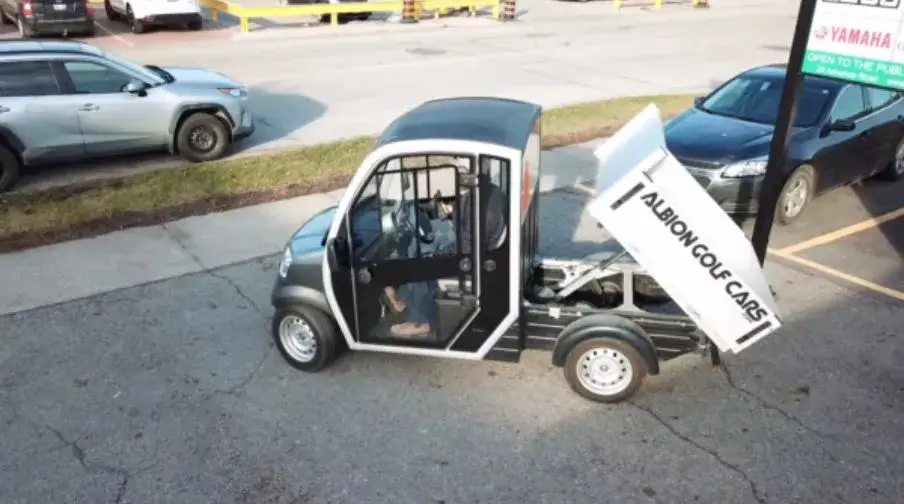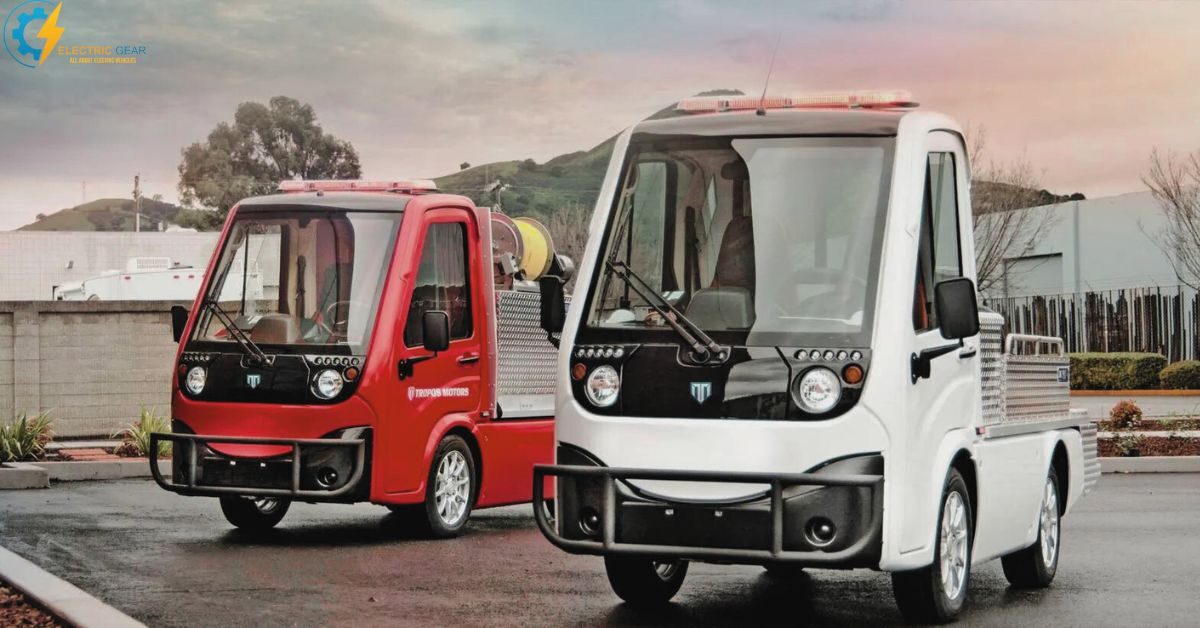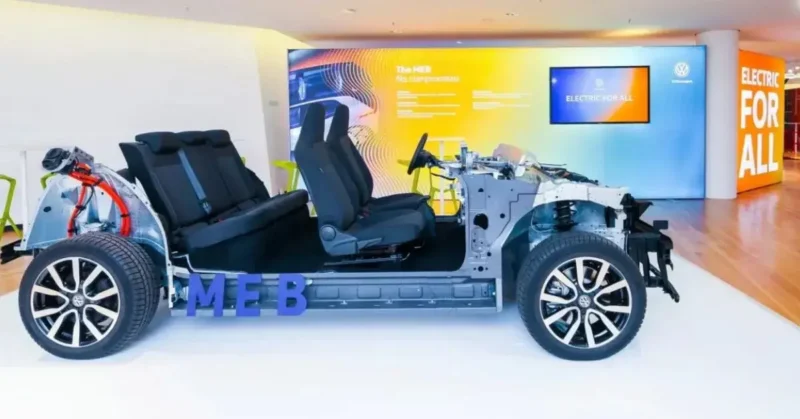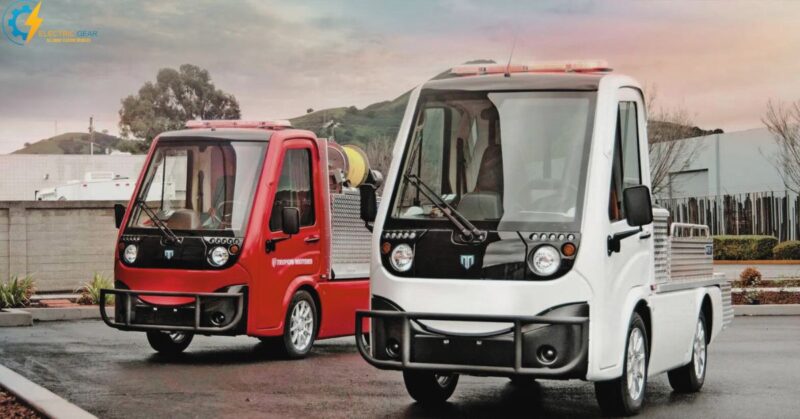Electric cars are more widely utilized than ever as the world’s attention turns more and more to sustainability.
Electric vehicles are becoming increasingly well-liked since they provide a green transportation choice for various uses. These are vehicles designed exclusively for professional and industrial use.
These vehicles are equipped with a high-capacity battery, a battery exchanging system, or a lithium-ion battery with a fast charging system.
The first utility vehicles had modest gasoline engines, such as a single-cylinder four-stroke. In this post, we’ll look at electric utility cars and how they’re influencing how people travel in the future.
What is an Electric Utility Vehicle?
Electric utility vehicles are designed for various utility applications, including transportation, maintenance, and delivery.

Similar to conventional utility vehicles, but powered by electricity instead of fossil fuels. Electric motors and rechargeable batteries power them and they can travel several hundred kilometers simultaneously.
The Rise of Electric Utility Vehicles
The increasing popularity of EVs is motivated by the need to curb emissions of climate-altering gases. Battery technology has advanced, so electric cars are now a feasible option.
Increased investment in the industry and the creation of new technology are the results of global governments encouraging the use of electric cars via tax breaks, subsidies, and other measures.
The utility vehicles’ only benefit is the delivery of products, services, and passenger transportation. More widespread use of these cars is expected to have far-reaching effects on the transportation sector and the fight against climate change.
Where Electric Utility Vehicles are Used
Warehouses and factories
Electric vehicles are used for goods transportation around warehouses and factories. They are also used for maintenance tasks like cleaning floors and changing light bulbs.
Airports
vehicles are also used at airports, like towing luggage carts, transporting passengers, and maintenance tasks.

Golf courses
These vehicles are commonly used on golf courses for transporting golfers and their equipment and for maintenance tasks like mowing the grass.
Parks and Delivery services
EUVs are used in parks and university campuses for maintenance, landscaping, and transportation. utility vehicles are increasingly being used for last-mile delivery services, where they can navigate congested urban environments more easily than larger delivery trucks.
Types of Electric Utility Vehicles
Electric utility vehicles come in various types, each designed for specific purposes. Some common types include:
- Electric Golf Carts: Golf carts are small, compact electric vehicles primarily used for golf course transportation.
- Electric ATVs: Electric all-terrain vehicles (ATVs) are particularly designed for off-road use and can be used for tasks like transportation and hauling.
- Electric UTVs: Electric utility task vehicles (UTVs) are larger than ATVs and are designed for heavy-duty work, such as transporting goods and equipment.
- Electric Tractors: Electric tractors are used in agriculture and landscaping industries for plowing, tilling, and mowing.
- Electric Cargo Vans: Electric cargo vans are often used in the delivery and logistics sectors to transport products and supplies.
- Electric Buses: Electric buses are often utilized in metropolitan areas for public transportation.
- Electric Trucks: Heavy-duty freight transportation is performed by electric trucks. The building, shipping, and logistics sectors all rely heavily on them.
- Electric Forklifts: Electric forklifts move heavy materials and equipment in warehouses, distribution centers, and factories.
- Electric maintenance vehicles: Manufacturing, warehousing, and transportation are just a few sectors that might benefit from electric maintenance trucks. These cars are more efficient, cost less, and produce fewer emissions than their gas-powered counterparts.
- Battery-powered utility vehicles: Battery-powered utility vehicles are becoming increasingly popular in manufacturing, warehousing, and agriculture due to their low emissions and operating costs. They offer quiet and efficient operation, making them an ideal alternative to traditional fuel-powered vehicles.
- Electric vehicles: Electric vehicles, such as electric automobiles, buses, and motorcycles, are becoming more popular owing to their minimal emissions, decreased noise pollution, and enhanced fuel economy. They promote cleaner air and a healthier environment by providing a sustainable alternative to fossil-fueled transportation.
- Utility carts with electric power: Electric utility carts are adaptable and efficient vehicles that are utilized in a range of sectors, including hospitality, facilities management, and manufacturing. They are perfect for indoor and outdoor usage because of their cheap running costs, minimal emissions, and silent operation.
- Electric utility trucks: Electric utility trucks are becoming increasingly common as a greener substitute for conventional fuel-powered vehicles in the construction, utilities, and delivery sectors. They are a sensible option for urban settings since they have lower running costs, fewer pollutants, and quieter operations.
How Electric Utility Vehicles are Changing the Game
EUVs are revolutionizing the transportation sector and paving the way for a more sustainable future. The following are some of the main ways that EUVs are altering the game:
- Reducing Carbon Emissions: Since EUVs have zero carbon emissions, they are an important component of the strategy to cut carbon emissions and slow global warming. This is crucial in urban areas because transportation contributes significantly to greenhouse gas emissions.
- Lower Operating Costs: EUVs usually have lower operating costs than conventional gas-powered cars. EUVs provide an affordable transportation alternative since they have fewer moving parts, need less maintenance, and use less fuel.
- Customizable: To satisfy certain requirements, such as garbage management, delivery services, and public transportation, EUVs may be adapted. They can adapt to various urban situations thanks to their adaptability and perform multiple tasks.
- Increased Efficiency: EUVs have excellent acceleration and torque response times, perfect for stop-and-go city traffic. Regenerative braking technology also enables energy to be recovered during deceleration, increasing efficiency even further.
- Government Support: Many governments all over the globe provide subsidies and incentives to encourage the use of EUVs. This assistance is assisting in lowering adoption costs and quickening the switch to a more environmentally friendly transportation system.
Conclusion
utility vehicles outperform traditional ones regarding sustainability, cost-effectiveness, and noise pollution. They have diverse uses in various industries and are more popular than ever.
EUVs have a bright future as battery technology improves, and they will continue to shape the future of sustainable mobility.
Frequently Asked Questions
What are electric utility vehicles (EUVs)?
These vehicles are mainly used in the workforce. The lithium battery in the EUVs has a rapid charging mechanism. Electricity instead of combustion engines power the latest electric utility vehicles. They are designed for various industrial and commercial purposes, such as transporting goods, equipment, or personnel within a specific environment or industry.
What are the advantages of electric utility vehicles?
EUV’s motors need minimal maintenance since they don’t need a timing belt, oil tank, or filter. The cost per 100 kilometers is much cheaper than for gas-only vehicles.
Are electric utility vehicles suitable for all industries?
EUVs are versatile and can be used in several industries, including construction, agriculture, manufacturing, logistics, etc. However, the suitability of EUVs depends on each sector’s requirements and specific needs. Factors such as range, charging infrastructure, payload capacity, and operational conditions should be considered when determining the feasibility of integrating EUVs into a particular industry.
What is the range of electric utility vehicles?
Most electric utility vehicles have a 60-mile range and charge in 8 hours. The range can vary depending on battery capacity, vehicle weight, and driving conditions. Generally, electric utility vehicles can travel anywhere from 50 to 300 miles on a single charge, with some specialized models offering even greater ranges.
What type of applications are electric utility vehicles used for?
Construction, facilities management, and municipal services are just a few examples of businesses that employ electric utility trucks for maintenance and servicing work. They are also used for distribution and transportation tasks in small spaces like campuses and warehouses.

Imran is an experienced content writer who crafts engaging and informative articles for a variety of industries. With a keen eye for detail and a passion for storytelling, Imran delivers high-quality content that resonates with readers. Whether he’s writing blog posts, social media content, or website copy, Imran is committed to delivering compelling content that drives results.







